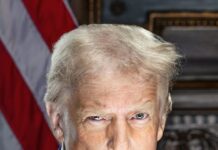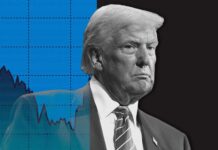Few televised events captivate the national attention quite like the president’s State of the Union address. On the third Tuesday in January, year after year, it draws American families together in front of a television screen to hear a summation of the past year and a look ahead to the next year in government from the chief executive himself. What he says upon the podium heavily impacts the markets, diplomatic relations, and the general public’s perception of the president himself. The general attitude and leadership style of the president also show themselves clearly in the address, as the holder of the highest office in the land is asked to stand before his constituents and hammer out his plan for the next year.
And on Tuesday, January 25, Barack Obama unveiled his vague, rhetoric-rich address to the nation. The president pulled out all the platitudes in his speech, laying out hazy plans to emphatically fix the ailing nation’s problems once and for all. He demanded accountability and results from all levels of government, praised teachers, spoke grandly of the future of the country, and sprinkled in, a la Team America, a healthy portion of America, Hell Yeah! ’s throughout the lecture to achieve the standing ovations that have become a staple of the Great Campaigner’s idealistic speeches.
Sounds great, doesn’t it? I mean who doesn’t love a chipper leader reassuring and motivating his people? Unfortunately, however, this was not a rally or ribbon-cutting ceremony. The State of the Union, as understood by students of politics and defined by the Constitution, is meant to sum up to the American people the previous year in plain terms and reveal the general agenda for the next legislative session. There is quite enough idealistic talk about general ways to improve the state of national affairs in the country, and quite enough demagogues and rabble-rousers in Congressional offices and talk radio studios alike to do it. The State of the Union is meant to consist of the chief executive of the biggest-spending, most powerful entity on the planet frankly discussing the affairs of the year past and laying out tangible plans for the upcoming year. This address sounded less like a CEO laying the groundwork for another year and more like a pandering politician firing up supporters at a campaign rally.
Oh and campaigning there was. President Obama spent the bulk of his hour-plus sermon reminding Americans that innovation spurs progress, that education brings a better future, that teachers motivate students, that all people ought to have great health insurance, etc., etc. Basically, if you can think of a clichéd call for a brighter tomorrow, chances are the president mentioned it in his disjointed speech. He made an appeal to the pathos of his audience, using anecdotal example after anecdotal example of Americans who suffer under the status quo and need above all things, implies the president, assistance from the federal government. He ran a clinic on properly imploring the faulty analogy, comparing our need for innovation (government funded and government approved, of course) to the space race of the 1960s, displaying the improvement of public roadways as more important than the creation of the transcontinental railroads. All in all, the speech was more a patronizing attempt to win over all Americans than it was a plan of action for the coming year.
Now, with that said, follow me as I dissect the actual meat of the speech. Barrack Obama, much like Bill Clinton, clearly moved a little closer to the center with his address, the first after the Republican shell shocking in November. His calls to limit government spending, stop hemorrhaging debt to foreign nations, and reforming the god-awful corporate tax code resonated strongly with Republicans and Tea Partiers. As my grandfather astutely pointed out, if you closed your eyes during his call for government cuts and accountability, you could almost see Ronald Reagan eloquently speaking the same words. And that is a very good thing for the president, as the Gipper is revered as a saint in conservative circles thirty years after his presidency.
The trouble, however, came in the bits and pieces of government expansion proposals and calls for more taxes that the former community organizer simply could not stifle in his speech. His call for government-funded roadway improvements sounded eerily similar to the public works programs of the Great Depression. While the proposals would put temporary jobs on the ledger and momentarily decrease unemployment, the projects would not provide permanent jobs, would cost the cash-strapped government millions, and would strengthen the dangerous public sector unions, such as the one that sabotaged the New York City blizzard cleanup. Furthermore, his support of entitlement programs to federal employees sets a dangerous precedent for cutting the federal deficit. Without a significant cut to entitlements, the federal government cannot hope to reign in its reckless spending.
Most distressing of all, though, is the president’s desire to reopen the debate on the Bush tax cuts. President Obama hinted at his wish to raise the taxes for the wealthiest 2% of Americans. This proposal would take the country a huge step backward in its attempt to end the lengthy recession. The wealthiest two percent, aka America’s job creators, must begin reinvesting their money and creating new, permanent jobs without fear of Uncle Sam extending his reach into their pockets. If, and only if, the president is serious about slashing federal spending and restoring a secure, business-conducive environment can the country crawl back from the brink and once again be the “beacon to the world” that President Obama described.
SOURCES







